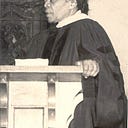History 101: Helen Kimball and Mary Grinnell
In this series, History 101, we’ll explore some of the topics and questions we frequently discuss at the Charlotte Hawkins Brown Museum.
After founding Palmer Memorial Institute, Dr. Charlotte Hawkins Brown would appeal for financial support to run her school from several different donors. The considerable energy that Brown devoted to raising funds for Palmer paid off. Many of Palmer’s early supporters made it possible for the school to quickly acquire land and buildings, and many of Dr. Brown’s financial supporters were women.
One of Palmer Memorial Institute’s most important supporters was Helen F. Kimball, a high school classmate of Brown’s from a wealthy family. At first, Kimball did not fully support Brown’s ambitious plans to build a school. Brown would quickly convince Kimball just as she convinced many others to support her dream.
In 1906, Helen F. Kimball supported Brown by purchasing a 200-acre farm in Sedalia, NC to add to the existing fifteen-acre campus. Kimball purchased and donated the land to “teach the boys good agriculture” and to raise food for the school. Dr. Brown held onto 68 acres of the purchased land and began to sell off the remaining 132 acres. Most of the land was sold to local farmers so a community of African American landowners that would spring up around Palmer. Brown believed that “community cohesiveness and economic stability would enable educational advancement to occur at a faster rate” and Kimball shared that goal.
Eventually, arguments would occur between Kimball and Brown on how the farmland should be sold, Kimball wanted the parcels sold to be no more than 10 acres in size. Kimball and Brown remained friends over this rift (Brown eventually named the school’s dining hall after her friend Helen Kimball) but Kimball was unwilling to finance the construction of a girl’s domestic science building. To secure funds for that structure, Brown turned to another longtime friend, Mary R. Grinnell.
Grinnell became the primary benefactor of the new domestic science building on campus. She had already been contributing at least $200 per year, several months’ wages for many in that era. Grinnell requested that all her donations be used towards the building but did not want the structure named for her. Brown, however, convinced Grinnell to allow the building to be named Grinnell Cottage in her honor.
Grinnell Cottage, complete by 1908, was in constant use for domestic science instruction. It had six bedrooms, dining room, kitchen, and reception room was plenty of space for girls to master home care. Before graduation, each girl lived in the cottage for one semester. Each girl performed various monthly duties, such as planning, preparing, and serving meals and caring for small children. Nearly forty years later, the Stone family would finance an up-to-date replacement cottage to continue the domestic training.
The money that Mary Grinnell donated came with unusual strings. Grinnell requested that Dr. Brown introduce sex education to the students on campus. Though sex education was not required by state or federal agencies, Grinnell thought that the students would benefit from studying a series of textbooks titled Self and Sex. The books were supposedly helpful to parents and teachers in “eliminating vulgarity.” Sex education, almost unheard of in schools at this time, was a course that Palmer pioneered.
Thanks, in part to these two women, the property value of Palmer Memorial Institute was equal to $10,000 by 1910.
